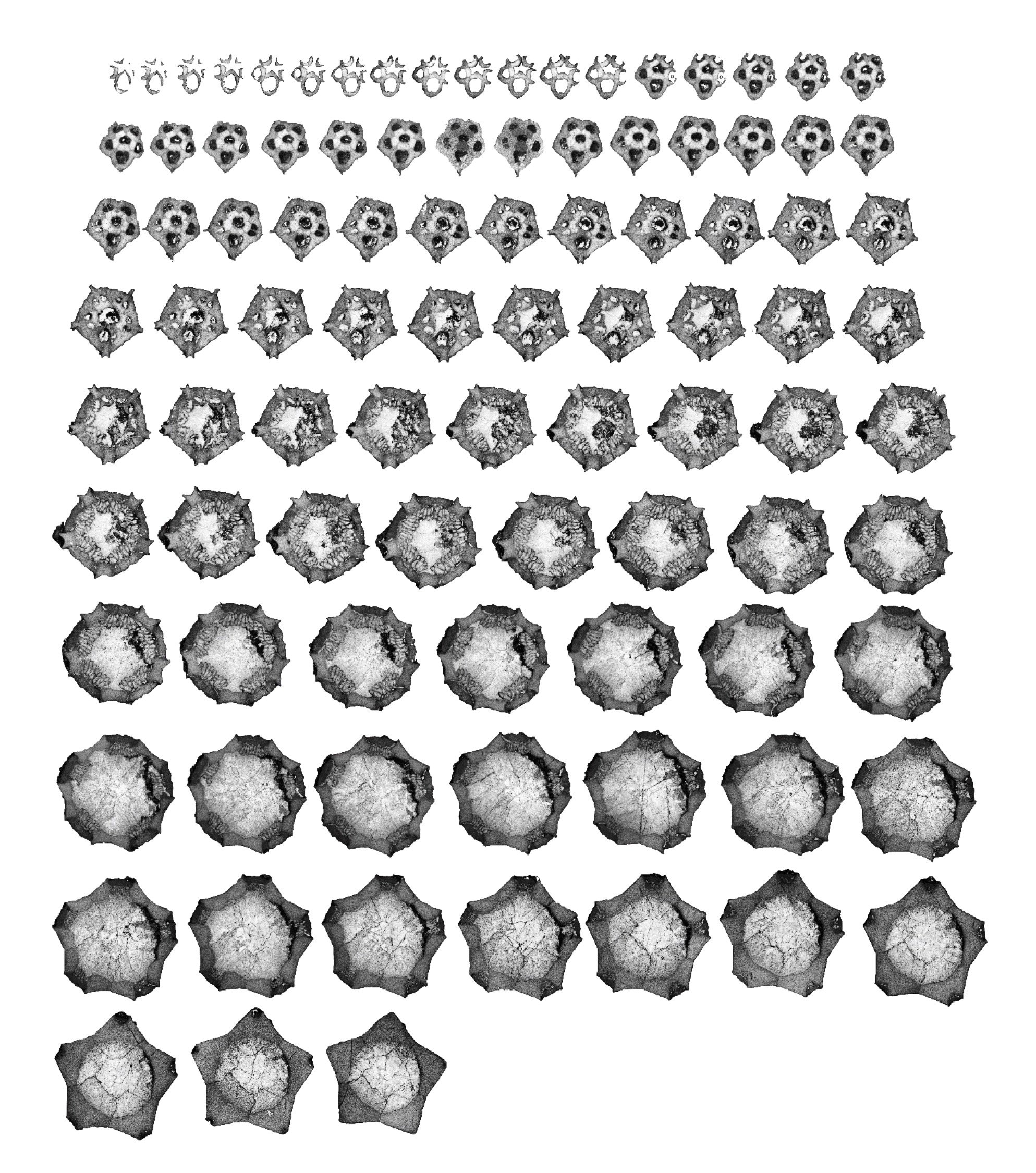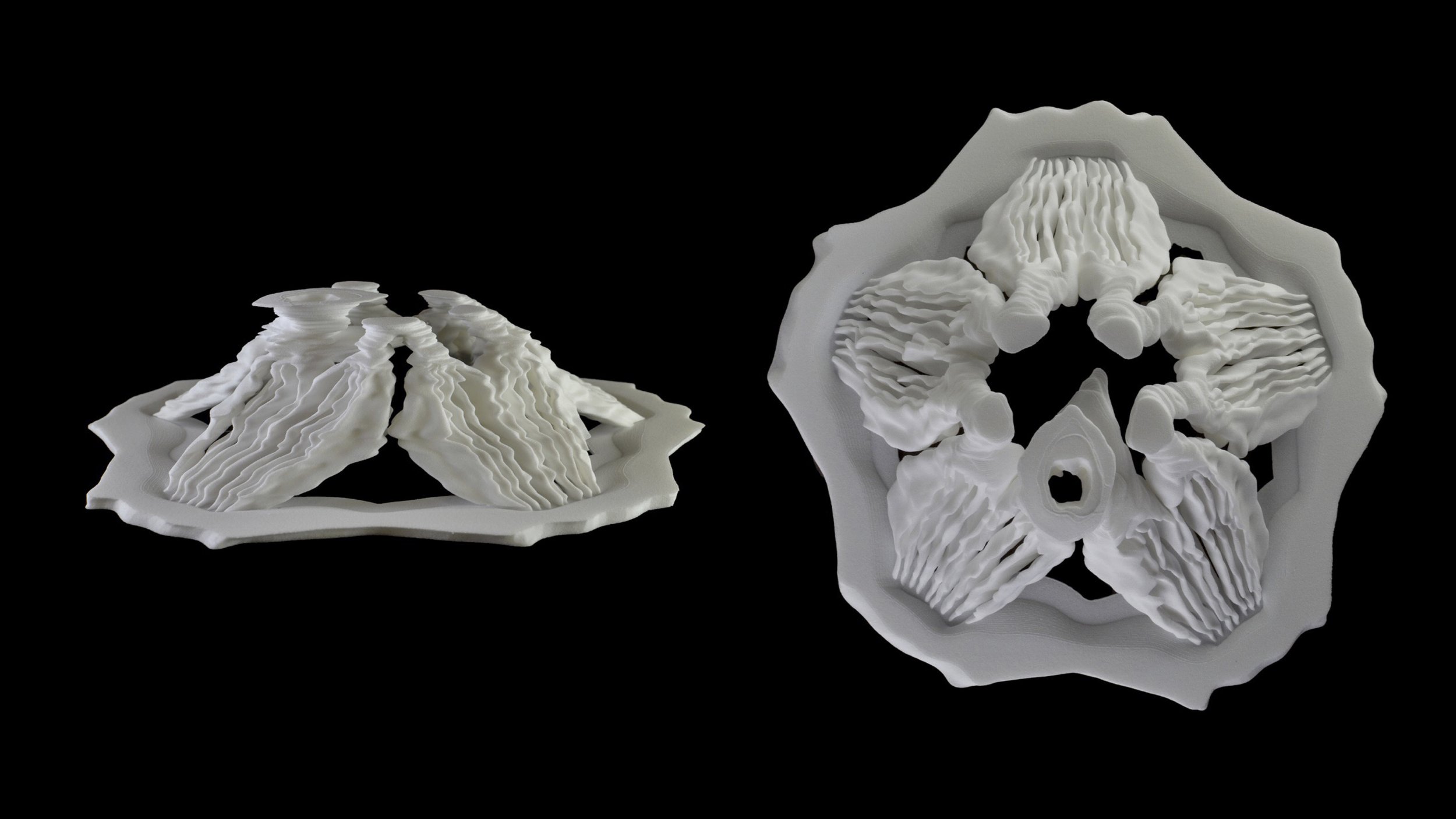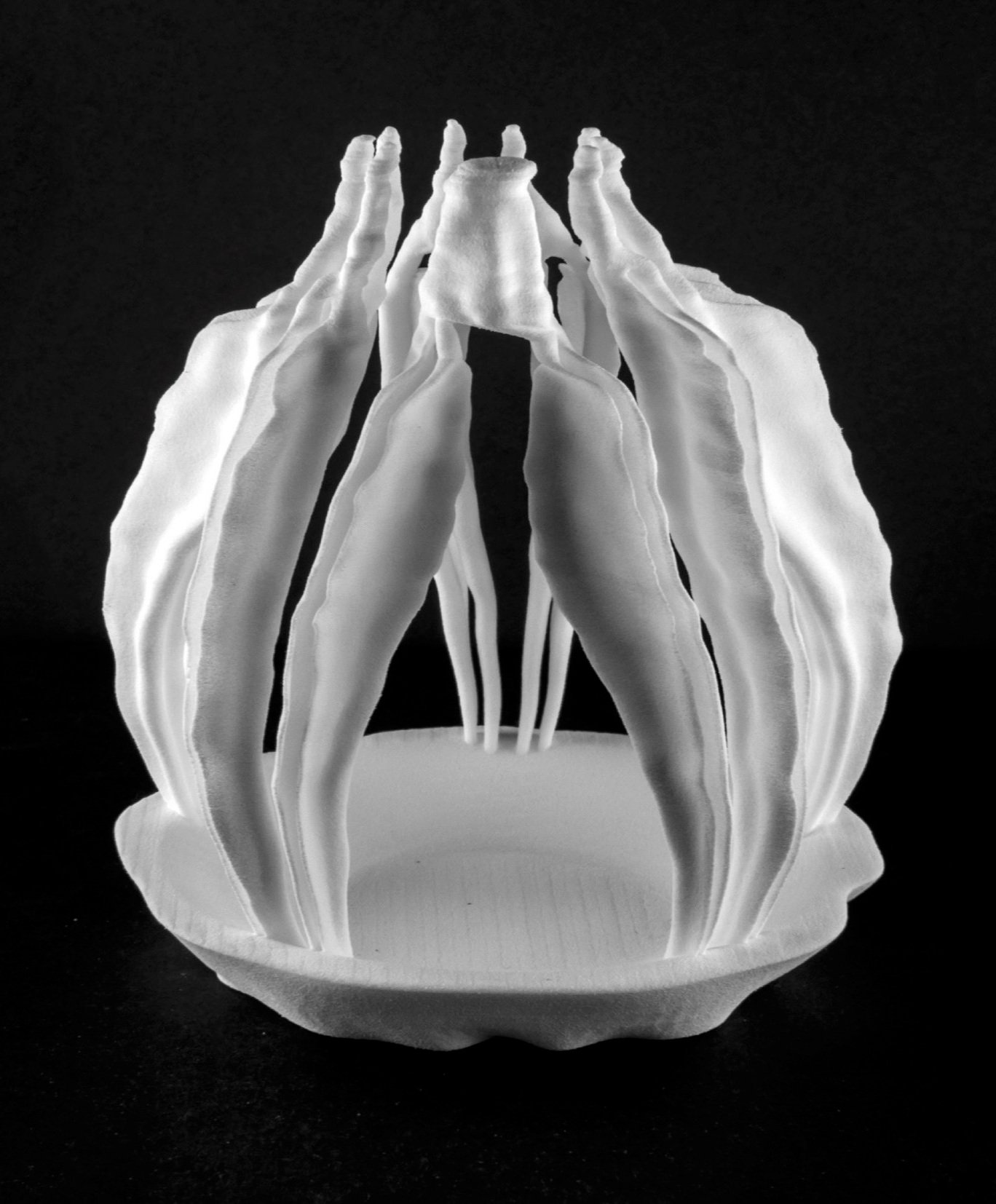Digitizing Acetate Peels
In 2012 I received a Temminck Grant from the Naturalis biodiversity center in Leiden, The Netherlands, to digitize their collection of blastoid acetate peels. These peels were commissioned by Albert Breimer in the 1970s. In those days, the only way to visualize the interior of a fossil was to grind through it and make acetate peels at closely spaced intervals. I spent several weeks digitizing the thousands of peels while living in Amsterdam and Leiden.
Using various software packages, Lyndsie White, one of my research assistants, could digitally reconstruct the acetate peels into a composite of the original fossil. More importantly, she could also reconstruct in internal structures of the blastoid. In this case we were interested in the hydrospires, the primary respiratory organ. The results can be visualized digitally or 3D printed
Using additional software, Lyndsie made movies showing the hydrospires in action. In the first movie, you are a water molecule flowing toward a blastoid hydrospire. You enter the hydrospire through a pore and exit through an exhaust opening called a spiracle. Using additional software, Lyndsie could quantify the velocity of water flow through the hydrospire from its entrance in the hydrospire pore to its exit out of spiracle. Blastoids used the hydrospires for respiration via gas exchange across the thin calcitic membrane. Videos are best viewed full screen. Our journal article discussing these results is here.











